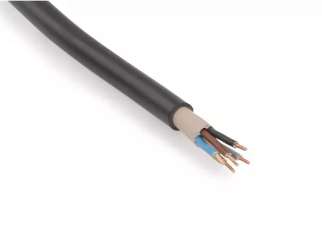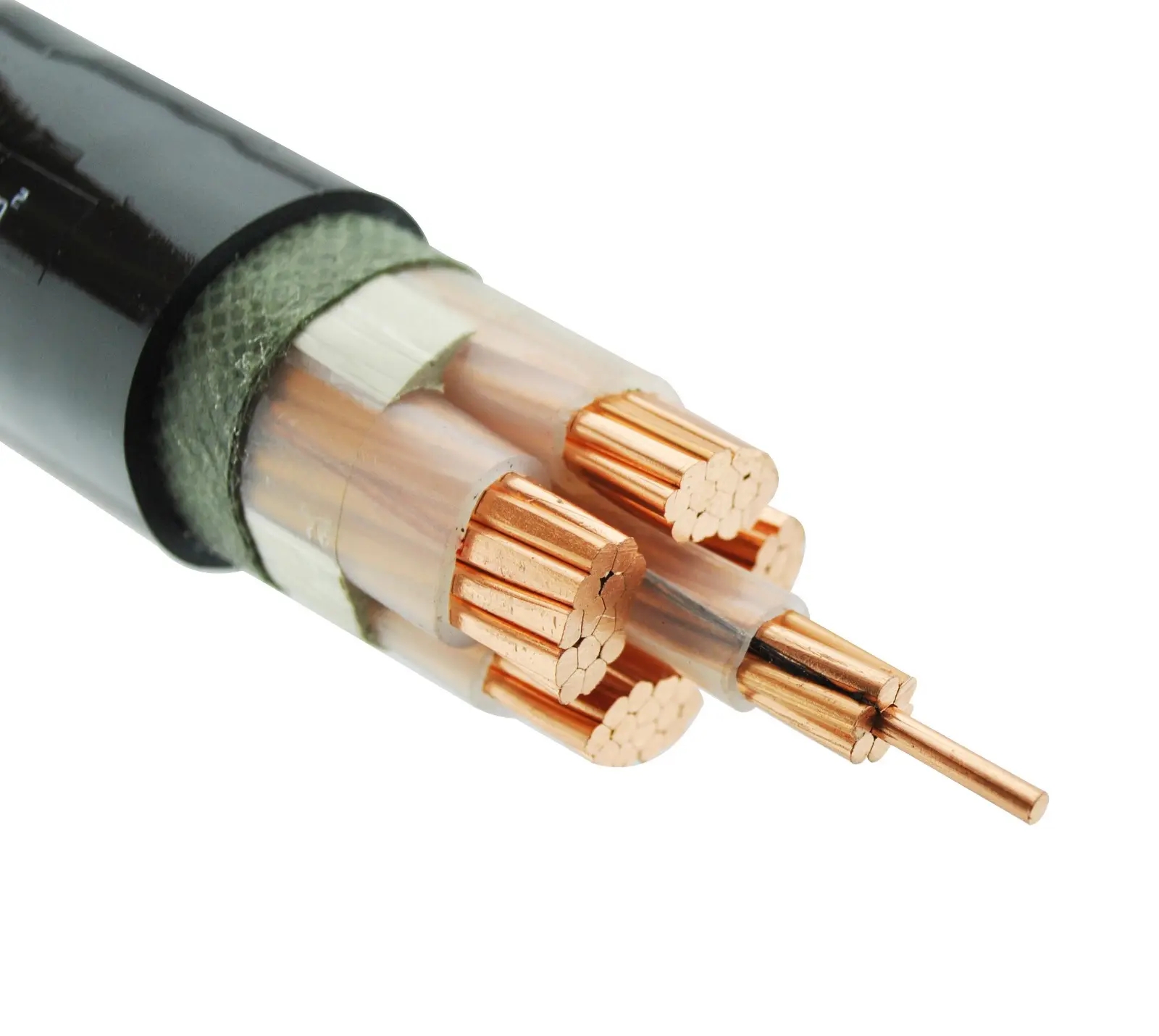I. Introdução
- Brief Overview of the Importance of Fire Resistant Cables in Building Safety
Fire resistant cables play a crucial role in ensuring the safety and integrity of buildings in the event of a fire. Unlike standard cables, which can easily catch fire and propagate flames, they are designed to maintain circuit integrity and continue to function even when exposed to high temperatures. This ability to withstand fire is essential for maintaining vital communication and power systems during a fire, allowing for safe evacuation and effective firefighting operations.
- Purpose of the Article: To Explore the Common Applications of Fire Resistant Cables in Residential and Commercial Buildings
The purpose of this article is to provide a comprehensive overview of the common applications of fireproof cables in both residential and commercial buildings. By understanding where and how these cables are used, readers can gain insight into the importance of incorporating fireproof cables into building design and construction. This article aims to highlight the critical role that fireproof cables play in enhancing building safety and ensuring the uninterrupted operation of essential systems during a fire.

II. What are Fire Resistant Cables?
- Definition and Basic Construction of Fire Resistant Cables
Fire resistant cables, also known as fire-rated cables, are specially designed cables that are able to maintain circuit integrity during a fire. They are constructed using materials that can withstand high temperatures and prevent the spread of fire, ensuring that essential communication and power systems remain operational during an emergency.
The basic construction of fireproof cables includes several key components:
- Condutor: The conductor is typically made of copper or aluminum and carries the electrical current. It is insulated to prevent contact with other conductors or surrounding materials.
- Isolamento: The insulation of fireproof cables is made from materials such as cross-linked polyethylene (XLPE) or mineral ceramic compounds. These materials are chosen for their ability to withstand high temperatures and resist the spread of fire.
- Sheath: The sheath is the outer covering of the cable, providing protection against environmental factors and mechanical damage. In fireproof cables, the sheath is also designed to resist fire and prevent the cable from burning or melting.
- How Fire Resistant Cables Differ from Standard Cables
The main difference between fireproof cables and standard cables lies in their ability to maintain circuit integrity during a fire. Standard cables are not designed to withstand high temperatures, and their insulation and sheath materials can quickly degrade when exposed to fire. This can lead to a loss of power or communication during a fire emergency.
Fireproof cables, on the other hand, are specifically engineered to withstand fire conditions. They are constructed using materials that are able to maintain their structural integrity and electrical insulation properties even at high temperatures. This ensures that critical systems remain operational during a fire, allowing for safe evacuation and firefighting operations.
- Importance of Using Fire Resistant Cables in Buildings
The use of fireproof cables in buildings is essential for ensuring the safety of occupants and protecting property. Some key reasons for using it include:
- Segurança: They help prevent the spread of fire and the formation of smoke, which can be deadly in a fire emergency. By maintaining circuit integrity, these cables ensure that essential systems such as fire alarms, emergency lighting, and communication systems remain operational during a fire, allowing for safe evacuation.
- Compliance: Building codes and regulations often require the use of fireproof cables in certain applications, such as high-rise buildings, hospitals, and transportation hubs. Using these cables helps ensure compliance with these regulations and provides assurance that the building is safe and up to code.
- Reliability: They are designed to be highly reliable, even in the most extreme conditions. They undergo rigorous testing to ensure that they can withstand fire and maintain their functionality, providing peace of mind to building owners and occupants.
- Property Protection: In addition to protecting lives, fire resistant cables also help protect property by preventing fire damage to critical systems and infrastructure. This can minimize the cost of repairs and downtime associated with fire damage, saving building owners time and money.

III. Common Applications in Residential Buildings
- Fire Alarm Systems: They play a crucial role in ensuring the reliability of fire alarm systems in residential buildings. These cables are used to connect smoke detectors, heat detectors, and alarm panels, forming a critical part of the early warning system for residents in case of a fire emergency. The use of fire resistant cables in these systems helps to maintain communication integrity and ensures that the alarm system remains operational even in high-temperature environments.
- Emergency Lighting: In the event of a power outage during a fire emergency, emergency lighting systems are essential for guiding occupants to safety. They are used to connect emergency lights and exit signs, providing reliable illumination along escape routes. The fire-resistant properties of these cables ensure that the emergency lighting system remains functional, even when exposed to fire or extreme heat, helping to facilitate safe evacuation.
- Power Distribution: They are commonly used in the electrical wiring of residential units to distribute power safely and efficiently. These cables are designed to withstand high temperatures and fire exposure, reducing the risk of electrical faults or short circuits that could lead to a fire. By using it in power distribution systems, residential buildings can enhance their overall fire safety measures and minimize the potential for fire-related incidents.
These applications highlight the importance of fire resistant cables in ensuring the safety and protection of residents in residential buildings. By incorporating these cables into critical systems such as fire alarms, emergency lighting, and power distribution, building owners and occupants can have greater peace of mind knowing that their building is equipped to handle fire emergencies effectively.
IV. Common Applications in Commercial Buildings
- Fire Detection and Alarm Systems:
They play a crucial role in ensuring the effectiveness of fire detection and alarm systems in commercial buildings. These cables are designed to maintain their functionality even in high-temperature environments, ensuring that signals are transmitted accurately during a fire.
The use of fire resistant cables in large-scale fire alarm systems helps to minimize the risk of signal failure or degradation, ensuring that occupants are alerted promptly in the event of a fire.
These cables are often installed in areas where early detection is critical, such as corridors, stairwells, and other escape routes, to ensure that alarms are triggered promptly to facilitate safe evacuation. - Emergency Evacuation Systems:
They are also used in emergency evacuation systems, including emergency lighting and public address systems. These cables ensure that these critical systems remain operational during a fire, helping to guide occupants to safety.
Emergency lighting powered by them provides illumination in emergency situations, helping occupants navigate through darkened areas to reach exits.
Public address systems connected with fire resistant cables enable emergency personnel to communicate important instructions and information to building occupants, facilitating a swift and orderly evacuation process. - Data and Communication Networks:
In commercial buildings, maintaining communication networks during a fire is essential for coordinating emergency response efforts and ensuring the safety of occupants.
They are used for networking infrastructure to ensure uninterrupted communication between emergency responders, building management, and occupants.
These cables are designed to withstand the heat and smoke generated during a fire, ensuring that data and communication networks remain operational, even in adverse conditions.
V. Benefits of Fire Resistant Cables
- Enhanced Fire Safety: They are designed to withstand fire exposure for a specified period, typically maintaining circuit integrity to prevent the spread of fire. They are constructed with special insulation and sheathing materials that can withstand high temperatures, ensuring that critical systems remain operational during a fire. This helps to minimize the risk of fire-related injuries and damage to property.
In addition to preventing the spread of fire, they also reduce the risk of electrical faults that can lead to fires. The special materials used in their construction help to maintain the integrity of the cable, even when exposed to extreme heat.
- Reliability: One of the key benefits of fire resistant cables is their reliability in critical situations. During a fire, these cables ensure the continuity of essential systems, such as emergency lighting, fire alarms, and communication systems. This reliability is crucial in maintaining safety and minimizing disruption in emergency situations.
Furthermore, the use of fireproof cables can enhance the overall reliability of a building’s electrical system. By reducing the risk of electrical faults and failures, these cables help to ensure the continuous operation of electrical equipment, even in challenging environments.
- Compliance with Regulations: The use of it is often required by building codes and regulations to ensure the safety of occupants. These regulations specify the types of cables that must be used in different areas of a building, based on factors such as fire risk and occupancy type. By using it, builders and designers can ensure compliance with these regulations and create a safer environment for building occupants.
VI. Conclusão
Fire resistant cables are crucial for ensuring building safety and compliance. They maintain circuit integrity during fires, protecting lives, property, and critical systems. Incorporating these cables in building designs enhances fire safety, reliability, and regulatory compliance, providing peace of mind to occupants. Their use in both residential and commercial buildings prevents fire spread, minimizes damage, and ensures vital systems function during fires. Future advancements aim to improve fire resistance, durability, and efficiency, promising more reliable and cost-effective fire resistant cables.




